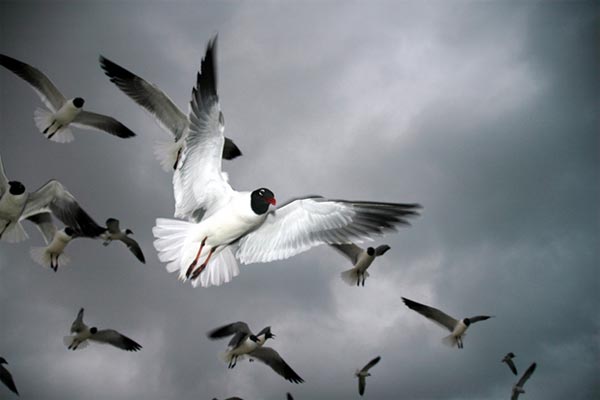Many of us are too young to remember the Hitchcock horror classic, The Birds, when flocks of psychotic flying predators began randomly attacking people in a small, northern California town. While this example is pure fiction, in real life birds can be particularly problematic, causing some homeowners and some businesses to hire professionals to remove them from their premises.

While our so-called feathered friends can cause structural damage, annoying noises and carry a number of different diseases, larger predatory species are capable of carrying off a kitten, cat or small dog. Depending on where you live, these smaller pets are better off left indoors during daylight hours.
What are some other ways our pets could be at risk from wildlife when they’re outdoors and how can we protect them from these threats? Here are some tips for keeping our companion animals safe from the dangers some types of wildlife can present:
Outdoor Enclosures
You might think your pet is safe from harm inside a fenced enclosure like a back yard or garden, but this may not necessarily be the case. In order to minimize risk from wandering predators by keeping your yard clean and:
- If you have fruit or other food-bearing trees, keep them free of ripe offerings and remove fruit that has fallen on the ground
- Thick brush, bushes, wood and compost piles are great hiding places for predators and homes for some type of possibly problematic pests like snakes or rodents and raccoons that can carry dangerous diseases
- Don’t feed your pet outdoors, even if they’re always able to consume everything they’re given, since even the scent of food can attract other unwanted animals
- Likewise, don’t store food outdoors for the same reasons
For the most part, predators are searching for food, so keep garbage cans securely closed, preferably located in a closed garage or shed.
Coyotes
These cousins to our canines can be found in almost every one of the contiguous 48 states in America, along with Canada and Mexico. By themselves, they’re not much of a threat, but they hunt in packs after much bigger game like deer, but they would still be satisfied with a small pet. If you have these critters nearby, take some extra precaution when it comes to your pets and if you happen to encounter one, remember there may be more nearby and:

- Don’t turn your back on them while looking at them directly in the eye
- If you have smaller animal, pick them up to protect them better
- Shout and wave your arms about, which will make you look larger, more ferocious and threatening, often enough to scare them off
- Throw rocks or sticks at them and if they come too close, a handful of dirt or sand in their eyes can make an excellent deterrent
If your dog or cat is acting nervous when you’re about to let them outdoors, their instincts could mean there’s danger afoot. Don’t leave them alone to fend for themselves if you (or they) believe there could be trouble. For the most part wildlife shouldn’t be a problem when it comes to your pet, but it’s better to be safe, than sorry over the loss or injury to your animal.
Author Bio
Amber Kingsley is a former art history student turned freelance writer who lives in Santa Monica, CA. This travel junkie has a goal to visit every country in the world. She has backpacked through Europe and South America with an eye on conquering Asia next. This peppy, perky writer loves pets, photography, and music.